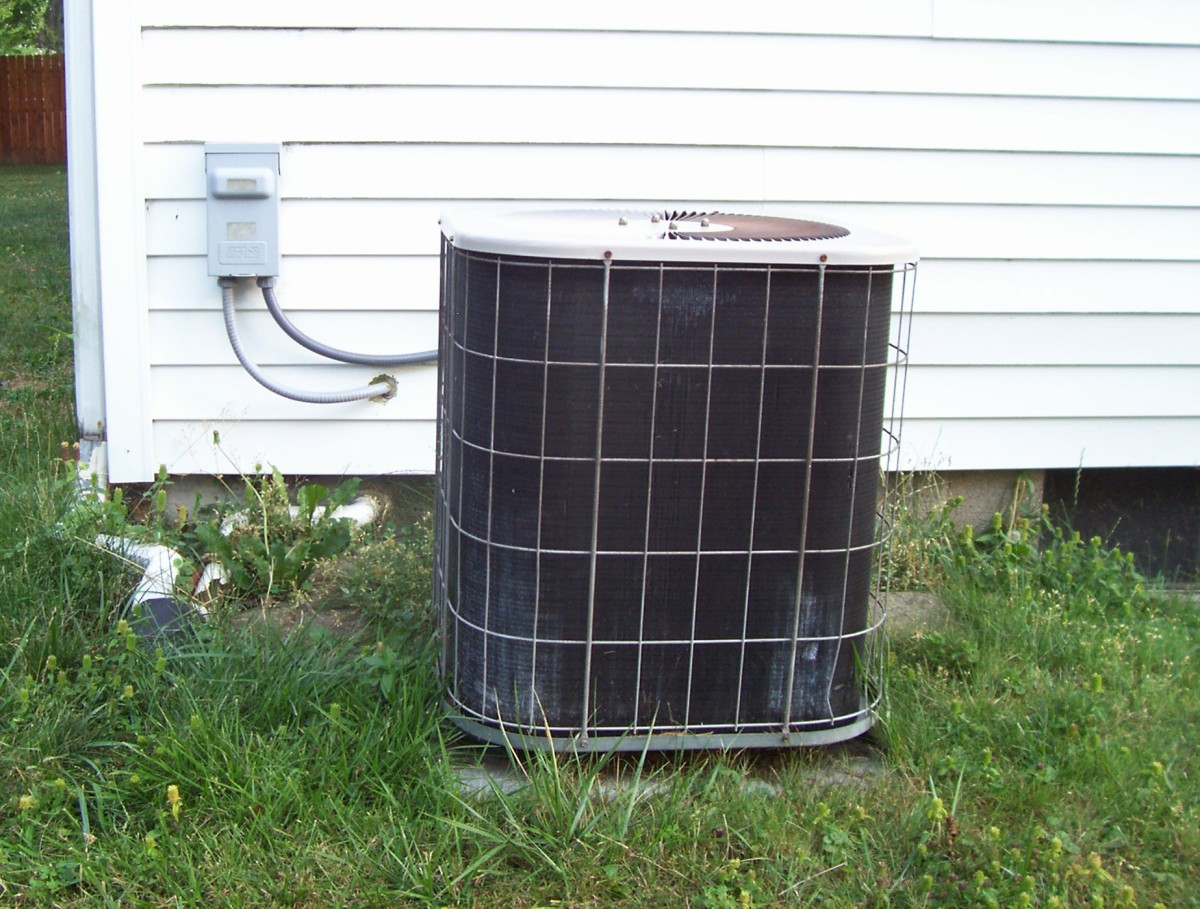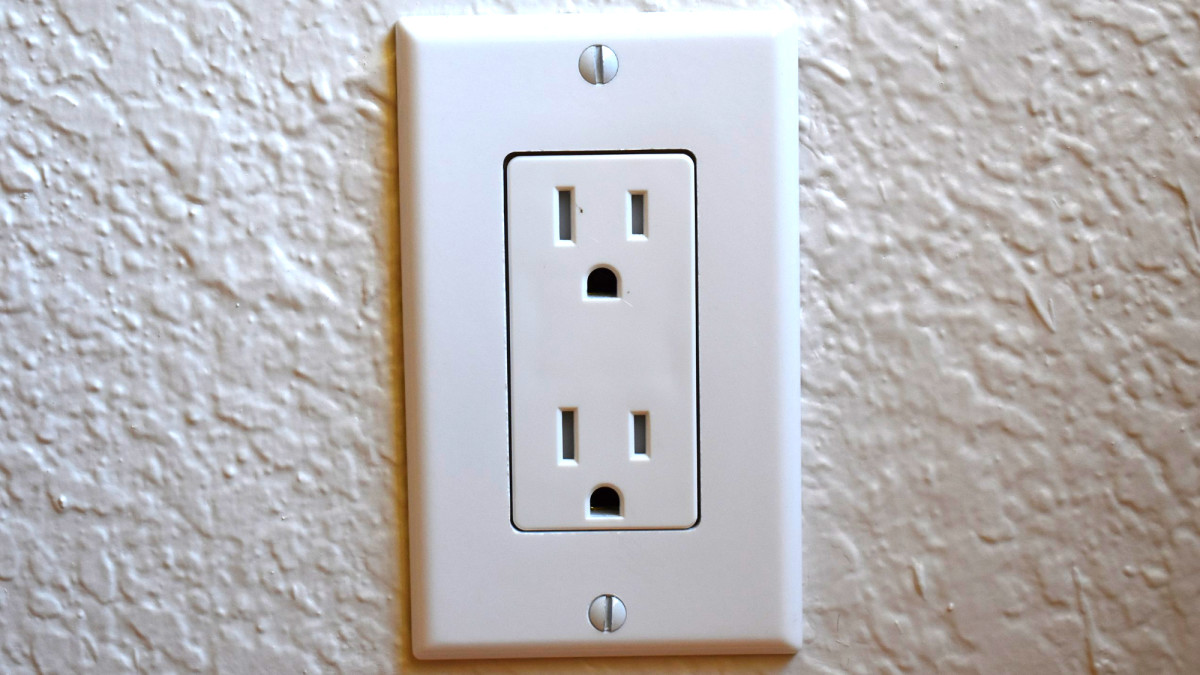Surviving Home Remodeling
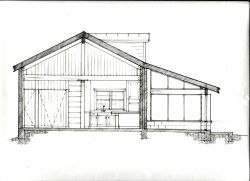
Getting Ready to Remodel or Add onto Your House - How to Avoid Trouble and Stay Sane
Here are a few tips and techniques to survive the excitement (both good and bad) of building or rebuilding at home.
A little preparation and planning can make the whole process of working on your house much easier and more successful. Maybe even cheaper.
Certainly saner.
As an architect, a homeowner, and even as a small painting contractor, I've seen all sides of the experience. It can be easier than you think.
But it DOES pay to be as prepared as possible before you begin. Certainly you want to document your property and structures - know what you're starting with! - and understand the legal limits and requirements that will affect any new construction or remodeling. Even something as simple as adding a pre-built tool shed can get you into legal trouble, if you don't know your neighborhood's restrictions. City and county building codes, Homeowners' Association rules, deed restrictions, and utility (and other) rights-of-way on your property can greatly impact what you build. All this may sound intimidating, but it's really just a matter of doing your homework before you start.
This Lens will try to help you prepare for your adventure in Home Improvement.

Before You Start
Save Yourself Tons of Trouble
DEFINE YOUR PROPERTY -
To start thinking about remodeling or adding to your existing house, you need to know what it is you're starting with. First of all, define your property legally and physically.
If this house is new to you, then you need to spend time just getting to know it. Learn the house's and property's quirks, its advantages and disadvantages. The best houses fit their sites.
Which way is north? How do sun and shade move across your property during the day? Discover which trees, if any, are evergreen and which lose their leaves in winter. Is there a prevailing wind? It can be enlightening to see your property during a rain storm or heavy snow fall. How does the land slope - and is there good or bad drainage? What are its good features, the things that make it special, and what are its bad ones? (Keep in mind that many apparent defects can become virtues.) Find any views - good or bad. Is traffic or privacy an issue? Are there any special conditions or design criteria: for instance, is this in Tornado Alley or along the Gulf Coast where high wind must be considered? Or somewhere where flooding or water erosion can be a problem? You need to know about loud over-flying planes or train whistles. Often you can mitigate problems and take advantage of a great view or a handsome tree in the design of your remodeling or addition.

Legal Property Description/Drawing
This legal drawing is sometimes called a Plat. This will show property lines with dimensions and compass directions, your house's location, plus any other structures and their locations, and often driveways or other improvements. When you bought you should have received a surveyor's drawing. It may be part of the deed. (Look for Deed Restrictions at the same time.) Ideally, you'll find a neat drawing showing all property lines, your house, plus building setbacks, any rights-of-way (R.O.W.) for utilities, and other legal restrictions that might affect adding to your home. There should be at least a written description of the land with metes and bounds. A drawing can be created from that description.
You'll want to copy this Plat and draw on all the additions, sheds, pools, or paving that aren't shown, plus substantial trees. Don't be too surprised if your neighbor's shed is partly on your land or your fence slides over onto his. It often happens.
If your property information is scanty or just for the sake of thoroughness, it's worth checking city or county records to see what drawings or information they have. For an urban or suburban lot, there will often be drawings of your entire housing subdivision.
(NOTE: Consult a lawyer if you think you need legal advice on any aspect of property law, real estate, or building contracts.)
- Find architectural or builder's drawings from the original building of your house, if you can - they'll save many hours and questions. Some cities keep copies in their building permit departments, though this is getting rarer. Original drawings may be out-dated however. Copy the plan and draw on any changes between what was originally designed and what actually got built. Add any newer construction.

Gather Photographs
- Photograph every side of your house, including important details of construction, problems, or aspects that show it's character and style. You can't have too many photos.
- Photograph the neighbors' houses and maybe the neighborhood, especially if you'll be changing your house's front elevation (street view), adding height, modifying your roof, or if it's in either a historic neighborhood or one with a Homeowners' Association.
- Check online for satellite photos showing your house and land. See what other information might be floating out there. You may be surprised.
- If your house is historic, look for old photos. It's original look might be quite different from today's. Local historical societies, libraries, or newspapers may have pictures or other information. County property records will list former owners.
(Besides any practical help these photos may be in restoring your house to its original charm, it's fascinating to learn the history. As you remodel you might want to save scraps of wallpapers etc. - whose layers are practically archaeological! Create a collage or scrapbook to illustrate your house's life.)
Next Step
Restrictions on your property
Second - and REALLY IMPORTANT! - find out what restrictions there are on what you do on your property. Find out about:
- Deed restrictions. These can be VERY restrictive, controlling allowable building materials, colors, styles, and even get into the detail of the type and color of window blinds.
- Set Backs - the legally required distances between buildings (sometimes including sheds) and property lines. These (and the next items) should be on your platt or legal property description.
- Easements and Right-of-Ways, the areas legally set aside for utility companies etc. to access your land. Sometimes, especially in the country, these may include the right of neighbors to get to their property through yours on an established road. Fire lanes are a similar requirement - though normally only for commercial property.
- City, county, state zoning and building codes and requirements, including energy codes. Ask your building permit office what codes apply.
- Historic District requirements - if any. Your local historic society may have information about your house's history and research materials for colors and materials.
- Homeowners' Association (HOA) rules and requirements - if any. Both Historic Districts and HOAs can be very restrictive and very detailed, controlling materials, colors, style, signs, TV dishes, landscaping, and much more.
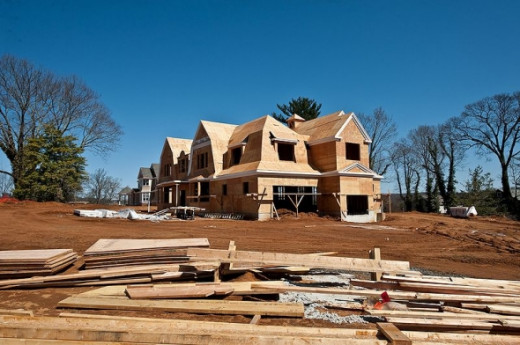
Evaluate the Property
What do you really have to start with?
Look at the condition of the house. Check the roof, the basement, and look all those places you don't usually think about to see how they're holding up. See what repairs are needed now or will be needed soon. Try to look at your home with a cold, stranger's eye: is it attractive? well maintained? up-to-date? charmingly historic? How does it compare to others in the neighborhood? You may need to bring in experts to help evaluate the structure, foundation, plumbing, air conditioning/heating (HVAC system), or some other technical aspect.
Don't be in a hurry to "up-date" the look of your house. What looks out-dated today will be charmingly retro tomorrow and historic the day after. For instance, I see great 1970s houses being disasterously up-dated to look (sorta) new... but the '70s are cool now! It'd be so much better - and easier - to just freshen up the house in a way that celebrates its '70s style. Instead of replacing the front door with a generic Home Depot one, paint that authentic "period" front door glossy tangerine! Add a big coolo retro-'70s plant pot (in avocado green) and enjoy the moment.
As you evaluate your property, remember that an awful lot of its usefulness and appeal is easy to improve - a matter of changing a color, freshening paint, cutting a new doorway, or correcting a few superficial and (relatively) inexpensive things. Good taste, imagination, and just a little money can have a huge impact.
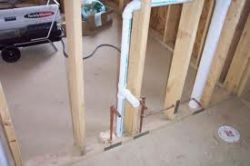
What Needs Doing?
Create a Program
As you evaluate your property as it exists today, list those things it does well for you ("Love the sunny breakfast area!") and those you wish your house did better ("Inefficient, gloomy kitchen - ick!"). List functions you'd like to add or improve ("Need kid play area") and those you don't need ("Why is the bathroom so big? Don't need the tub").
Many homeowners become obsessed with the idea of Resale Value - will this or that feature help or hurt the house's future sale?
Well, it's hard to predict. Generally, improvements that raise a sub-standard house to the level of its neighbors tend to help sales, ones that raise a house above neighborhood standard mostly do not. Expensive improvements of any kind do not add dollar-for-dollar to a future sales price: no one wants to pay as much for that granite counter as, maybe, you do. Bathroom updates etc. may add half (or less) of their value to that price. On the other hand, painting a dingy room sparkling white (cost $ 40) may help SELL the house... what's that worth? My advice therefore (and it's only advice) is to only add or do work that makes the house roughly comparable in value to its neighbors and that improves its livability FOR YOU.
Make a wish-list. What do you want?
This list will be most useful and will make creative solutions easier, if you make it both specific and rather open-ended. Write, for instance, "Need baking area in kitchen and room for 3 stools" rather than "Need bigger kitchen." A bigger kitchen - if it's big near the sink - might not help baking or stools.
This is a process architects call "Programming," and it's very important. If you don't ask the right questions, you can only get the right answers by accident. Programming involves real thought about how your household lives. Often there will be no one best solution, just one choice from several that will work best for your family, house, and budget.
For instance, if your washer and dryer are presently in the garage, your list might include moving these somewhere more convenient. But don't just jot down "laundry room." Where would laundry facilities SUIT YOU BEST: near the bathrooms and bedrooms? (Near the dirty clothes, towels, and sheets.) Or near the kitchen? (Where you can multi-task.) Do you need this laundry to double - as it often does - as an entry/mudroom or as a place to isolate the pets? Should it combine with some other extra function - home office, playroom, or hobby room? Does laundry (or this extra use) have special requirements: for instance, would morning light help? If it doubled with a painting/craft area, north light might be nice. Or maybe laundry should be the smallest possible closet off the kitchen or bedroom hall. Stack the washer/dryer! What do you need besides laundry machines? Ironing board, sink, drip-dry rod...?
Then, looking at this from another direction, is there an underused area of the house, where a laundry might make sense? (Which explains basement laundries.) If so, is there a way to make this more convenient to use - like a laundry chute from bedrooms above, so you needn't lug dirty clothes.
Programming takes thought and self-knowledge.
A Few Other Sites - To Help You Decide How Much Work to Do
Here are a few level heads that talk about just how much remodeling is smart remodeling...
- Mortgage Match
Good advice on not over-spending on remodeling and on matching your outlay to your situation. - Michigan's Attorney General
Gives advice to home remodelers. - Ten Best Remodeling Projects...
This lens explains what areas will give you the best return for your investment... including some great tips for small, easy, cheap fixes that will help your house look instantly better. (And sell faster too!)

Next Steps
Once you've gathered all your documentation on your house and property and know the rules you have to work under... (Understand those rules? There you may need help - there can be a lot of interpretation.) Now's the time to decide WHO will be helping you.
Whether you hire an architect, work one-on-one with a builder or general contractor, or work directly with sub-contractors and manage the construction yourself, it's important to find people you CAN work with. The ideal is someone or some firm (but it all comes down to that one person) who is of good repute and is competent, honest, dependable, pleasant to deal with, and... There's a back-and-forth relationship and good communication required for construction, so you need someone who listens and who you understand in return. Especially between you and your architect or G.C., there's got to be a certain sympathy and trust.
Obviously, you're going to have to hunt for this person.
Nothing is as useful as personal recommendations from friends, family, co-workers... Look at their other projects. Talk to earlier clients. Ask around. And then trust your gut. No matter how low the bid or how impressive the portfolio, if you don't feel "right" about working with this designer or builder - DON'T. Please understand that it's not that you, the Homeowner, are auditioning a new BFF... it's just that, If this expert is to help you design your home, then they must be able to understand your concerns and way of life. It helps if you get along well. These people may - literally - need to count your cookie sheets or look through your underwear drawer (both jobs I've had to do as architect) in order to design what you need so you want to limit the ick! factor. They do! Find someone you can work with.
Sub-contractors are a little different - you needn't be soul-mates with your plumber - but it sure is nice if he (or she) will show up. Find out their reputation too.
Last word (for now) on the working-together theme. HAVE CONTRACTS. With good people you only need a contract to remind each party of the details, but always have a signed contract that you and they understand. As part of all this legal preparation, it's important to think through the right INSURANCE. You'll definitely need expert advice on these legal and liability issues.
Advice on Choosing Your Experts 'n More
Not just the human factors, but the legal ones - thorny issues like contracts and insurance.
- Fricot Building
Advice on contractors, contracts, and insurance.
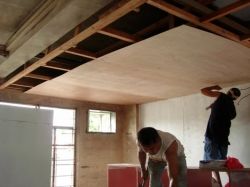
Getting Started
At this point, not a single nail has been hammered on your new construction project - but you should feel that you've finished some very important - foundational! - work.
* You know exactly what you want.
* You know what you can legally do.
* You know what you can afford.
* You have hand-picked experts to help you.
* You have legal and insurance contracts.
All this helps the odds that you'll be happy with the process of building and with its results and that you won't make some expensive mistake.
But...
Always remember that home building and remodeling is not like, say, buying a new car. You're not getting a ready-made, finished, we-tested-a-thousand-of-'em-already kinda thing. This is the first time ever that this particular project has ever been done.
There are going to be a few miscalculations.
There will be some surprises inside the existing walls. The city will surprise you with a red tagged inspection. A subcontractor will (surprise!) Not Show Up On Time... and that'll delay everything else for three weeks. There will be misunderstandings and a few mistakes. And you will change your mind about something that had sounded like such a good idea at the time... You get the idea.
Allow for this. Add in some extra time and money for contingencies. Then be very chill and zen about these inevitable, nay necessary! changes. Take deep, calm breaths.
Building a house is more like having a baby than like buying a car.
Feeling calm? Prepared? Ready for whatever comes your way? You're ready to start building!



Higher-Tech Remodeling Help
Computer plan it and draw it kits - the high-tech answer to grid paper and a pencil!
A Few Other "Building" Sites to Visit
Here are some worthwhile webpages on remodeling and building that you may want to visit.
- Oprah on Remodeling
Oprah? Well, a remodeling project can be a huge strain - and a strain on a marriage. Read here for support! - Beck Design Group
A terrific list of tips that will help you survive remodeling. - This Old House
THE home fixer-upper guru! - A Homeowner's Tips on Renovation
Obviously-learned-from-experience suggestions. Some good ones. - Control Humidity in Your Home
A Squidoo Lens on controlling household humidity - and on Mold, its nasty friend. - Better Homes and Gardens
Home remodeling information. - Before You Remodel
Another list of but-wait!-first tips before you start construction. - Better Homes and Gardens "Home Remodeling Projects that Pay Off"
Good suggestions for improvements that might pay for themselves. - HGTV "Home Improvement Dos and Don'ts"
Some good tips before you start.
More Sanity Support
One thing I haven't mentioned is the need - during the actual work - for breaks. You can only eat so much plaster dust with your cereal before you get tired of it!
Plan a few weekends away or nights in a motel. Allow extra in your budget for eating out when the kitchen is unbearable. For laundry service the days the plumbing is turned off. Cut yourself some slack. Be sure to build some extra time and money into your budget for pamper-me moments. Just to save your sanity.



This Lens was awarded a Purple Star!
Thank you Squids for the vote of confidence - it's much appreciated. (You like it! You really like it!)
More building and planning info to come - in later additions. Please visit again.











